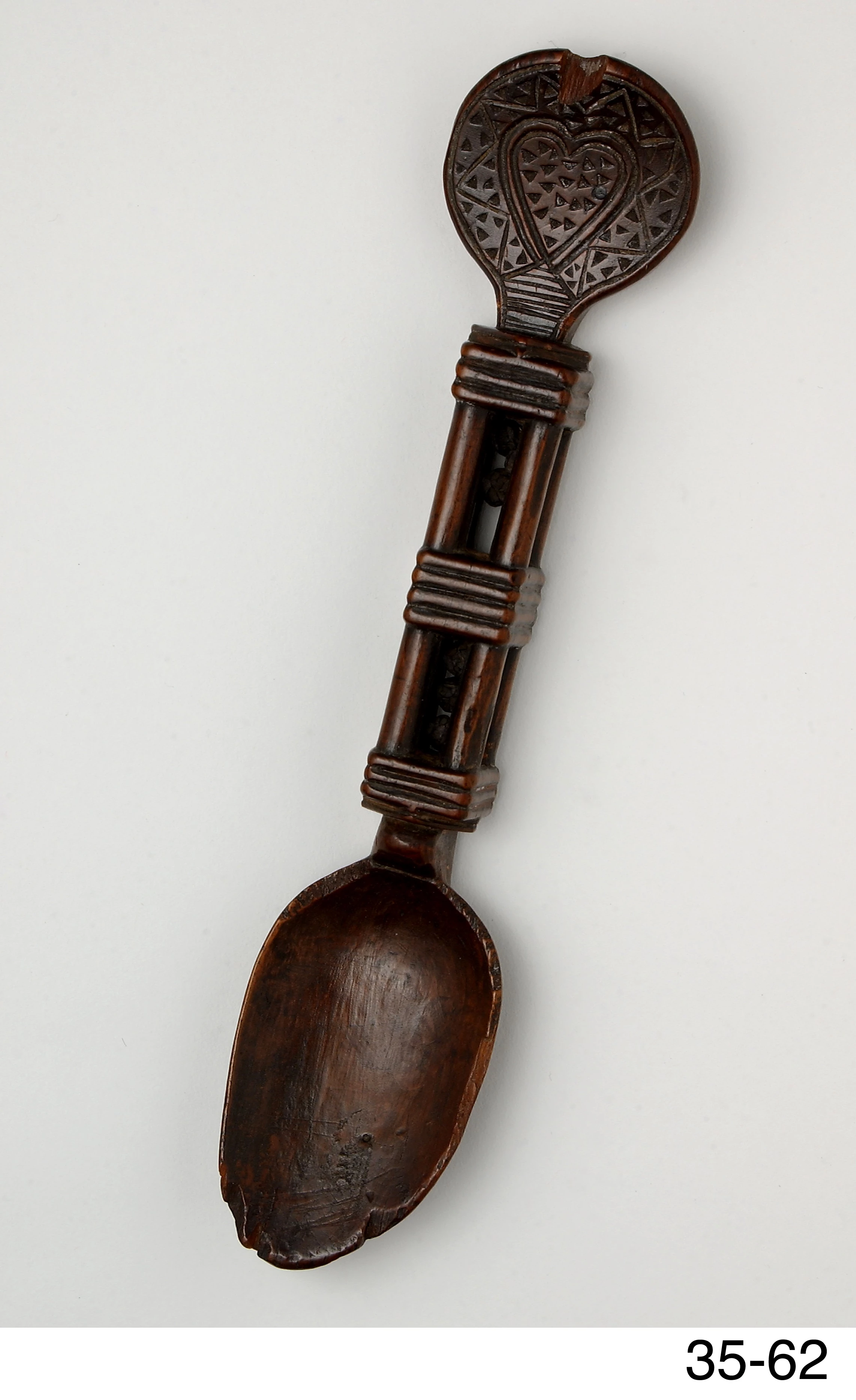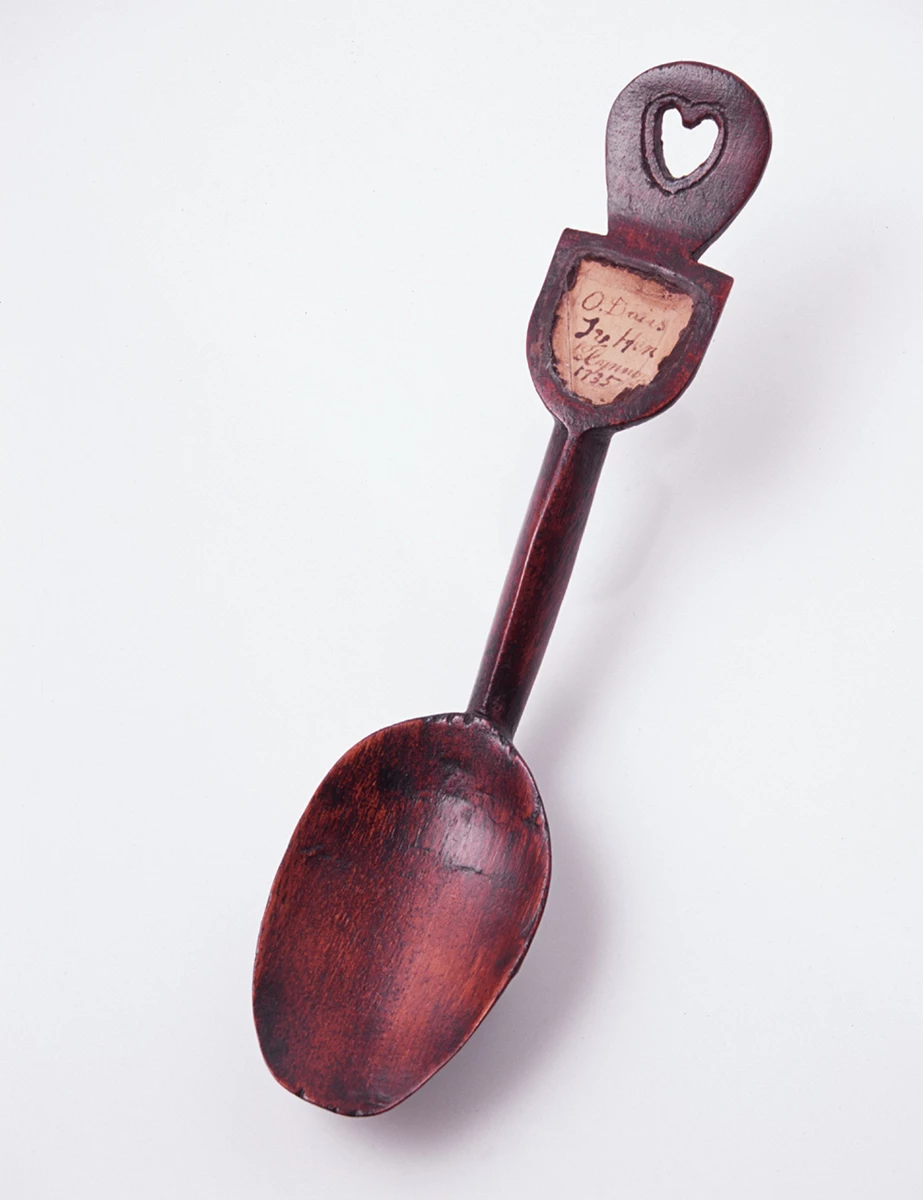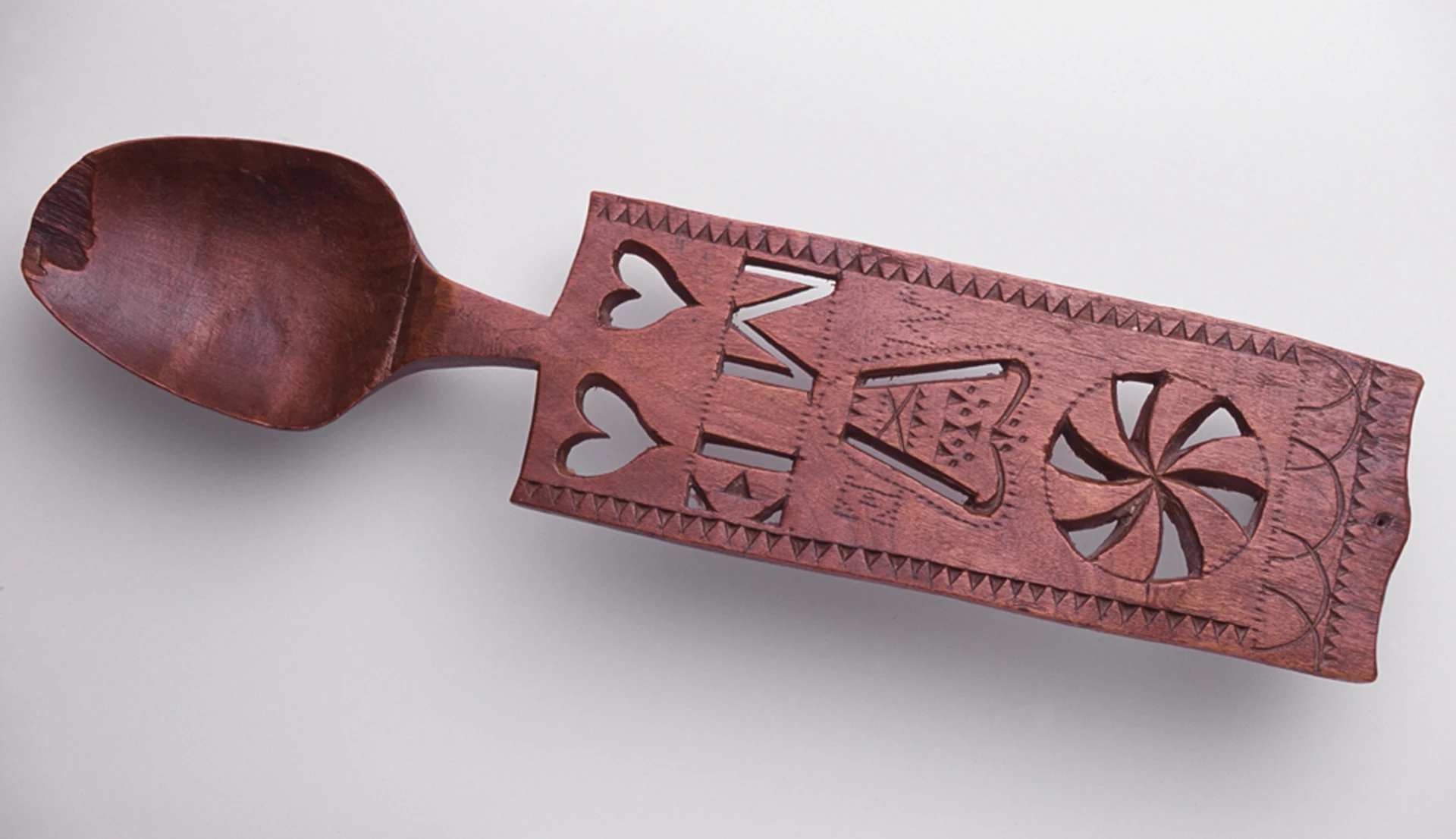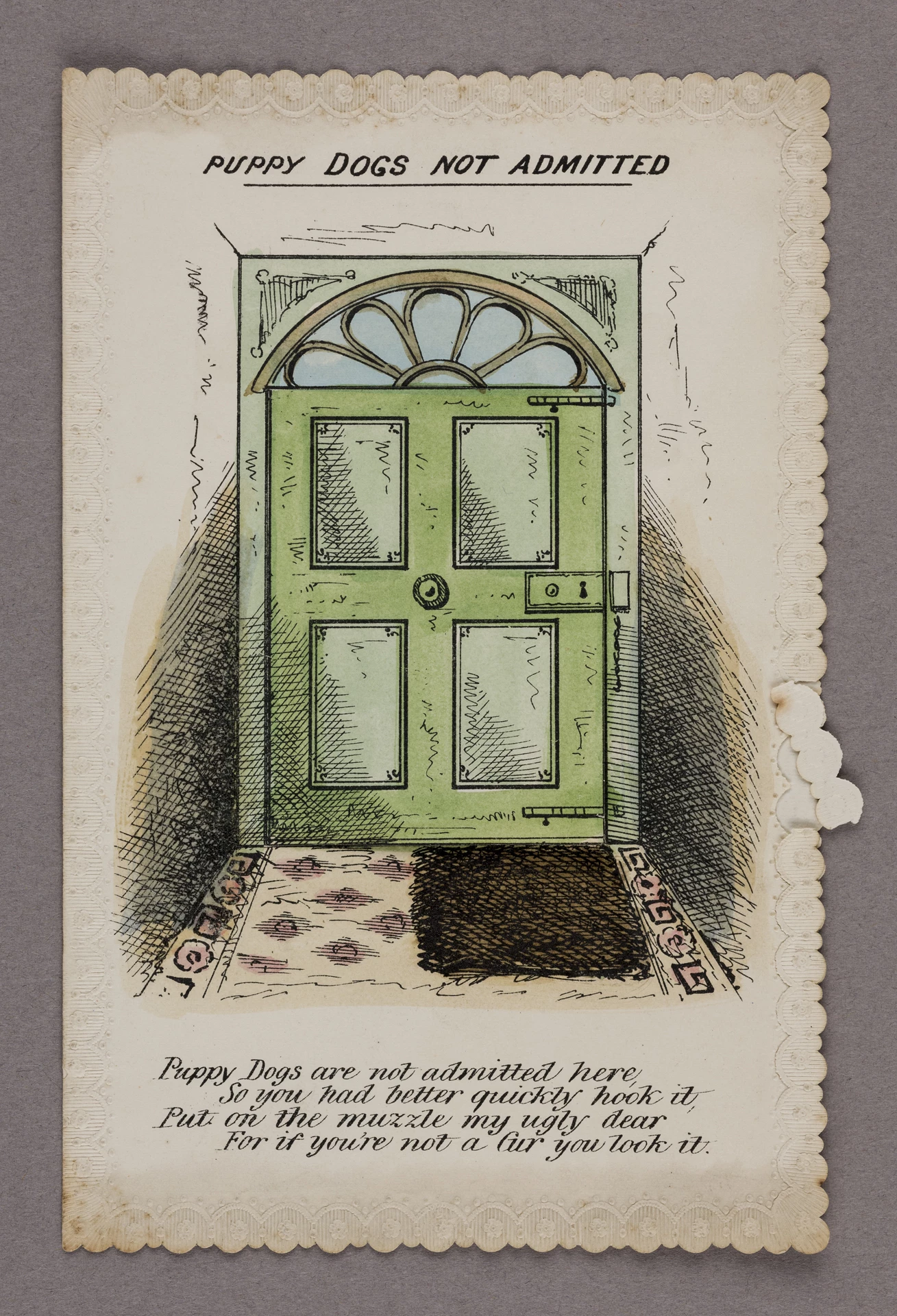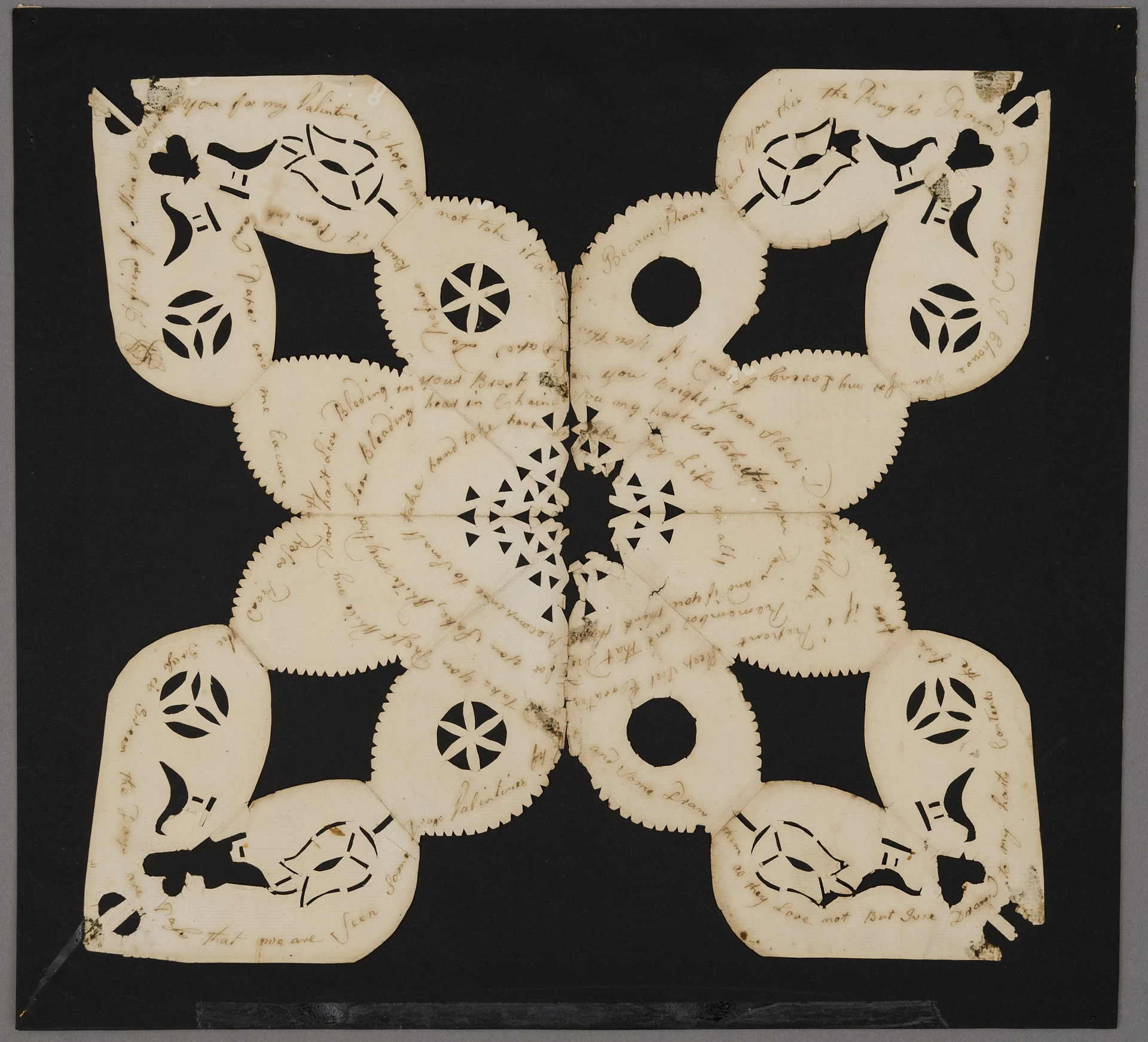Love tokens
14 February 2018
To celebrate St. Valentine’s day, and the recent St. Dwynwen's day, here are images of items from the collections at St Fagans National Museum of History, given as tokens of love.
The Lovespoon
The earliest dated lovespoon in the SFNMH collection is from 1667 but it is probable that the tradition of carving lovespoons pre-dates this. The tradition of spoon carving for domestic purposes was a common pastime during the long winter months, especially in farming communities. The early lovespoons were given as love tokens but also used by the receiver as a spoon for eating. As the craft developed they became more decorative and less utilitarian. Shapes and decorations were added and below is a list of these with descriptions of the meanings.
Hearts
The heart is the universal symbol of love and is frequently seen on Welsh lovespoons. It is a sign of passion and strong emotion which surely signifies the carver’s depth of feeling for his beloved. A lovespoon showing twin hearts might well indicate a mutual love between sender and recipient.
Double bowls
Occasionally, lovespoons are carved with two or more bowls; two possibly signalling the union of the souls when joined together and three perhaps indicating the wish for a child.
Comma or paisley shape
Often visible on historic Welsh lovespoons, this shape is said to represent the soul and deep affection.
Balls in cage
Balls carved within cages are commonly thought to represent the number of children desired by the carver, but could equally be a sign of a man held captive by his love.
Chain links
Generally considered to indicate loyalty and faithfulness, chain links might also symbolise a couple bound together in their love and loyalty.
Diamonds
Diamonds are believed to represent a wish for prosperity and good fortune and a promise to provide well for a loved one.
Keys and keyholes
In addition to the house images that sometimes appear on Welsh lovespoons appearing to represent domestic contentment, key and keyhole carvings are also used frequently, perhaps symbolizing security or, more romantically, the key to one’s heart.
Wheel
Wheel symbols often feature in Welsh lovespoons and are said to represent a vow by the carver to work hard and to guide a loved one through life.
Valentine Cards
The first written valentine message in England dates from 1684 and in Wales the poet Edward Morris, Perthi-llwydion mentions a valentine message in his works during a similar period. It is not until the 19th century however that the custom of valentine cards became popular, the earliest examples in Wales are from the early part of that century. In Glamorgan, also during this time, true lover's knots were distributed as favours on Valentine’s Day. Known as common symbols of affection and devotion, they were later incorporated onto valentine cards. It is also well known that the path of true love never runs smoothly and there are also examples in the SFNMH collection of valentine spite cards, sent to those who had rebuked the sender’s affection or broken off a romance. This first image shows an example of such a card.
